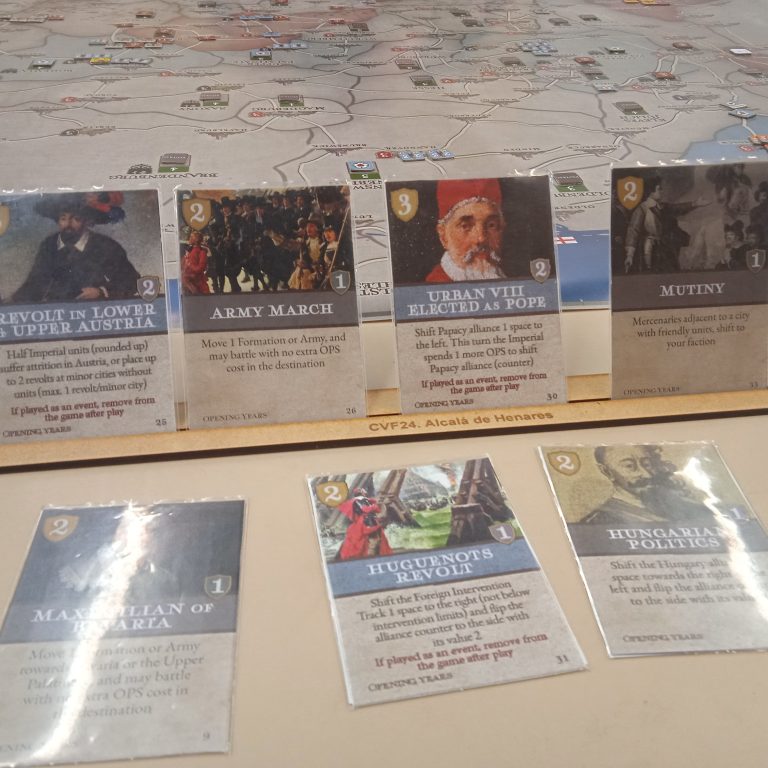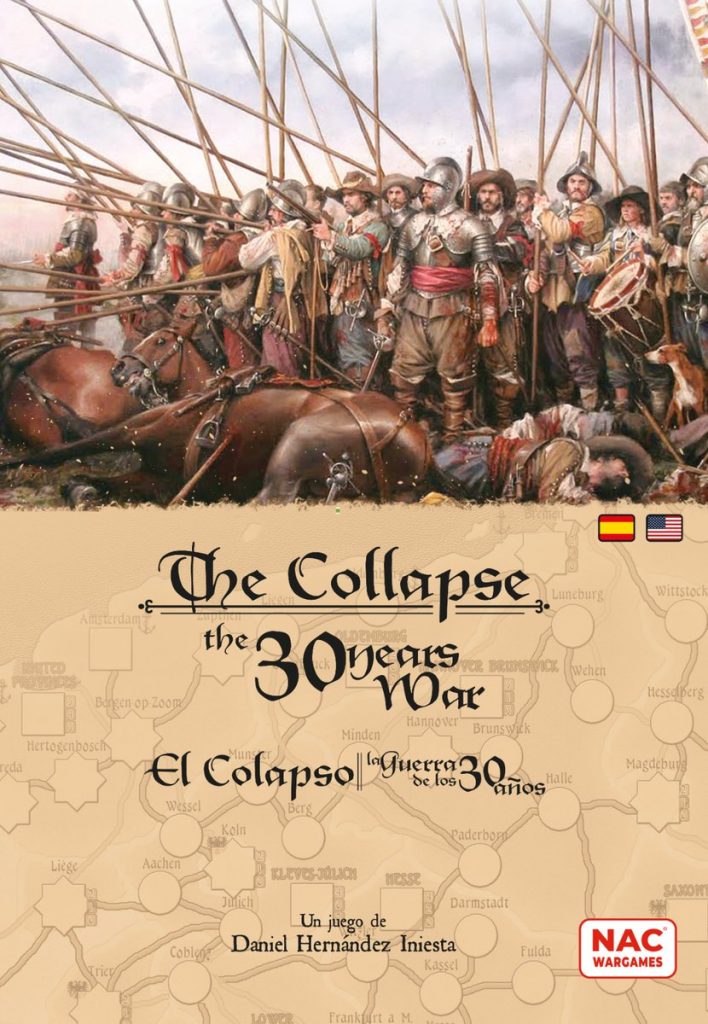
For English version of this article, please scroll down
- Wallenstein en ‘El Colapso’
Tal día como hoy falleció el famoso general Albrecht von Wallenstein, que a las órdenes del emperador Fernando II participó durante la guerra de los 30 años en grandes batallas como Dessau (1626) o Lützen (1632). Por razones ampliamente discutidas a lo largo de la historia, siendo consideradas como las más probables una posible intención de pasarse al bando protestante o una gran ambición personal, el emperador Fernando II ordenó su asesinato en 1634.
‘El Colapso’ refleja la importancia de Wallenstein en el juego desde su entrada en el turno 2 con el mejor nivel de activación de los líderes, lo que le permite activar más fácilmente a las unidades que estén con él, así como maniobrar para evadirse o interceptar más fácilmente y tener mejores opciones de sobrevivir a las batallas en las que participe.

En ‘El Colapso’, Wallenstein tiene los siguientes efectos:
1) Wallenstein no puede estar en la misma ciudad que Tilly.
2) Durante la fase de fin de turno, el jugador católico ganas 2 puntos de prestigio extra si está en el mapa.
3) Posibilidad de mantener a Wallenstein en ‘El Colapso’ (ver apartado 2).

- “Y si Wallenstein no hubiese sido ejecutado?”
‘El Colapso’ incluye una opción estratégica con un “what if?” muy interesante y históricamente posible que Ignacio Notario (que revisó un reglamento inicial del juego) me sugirió.
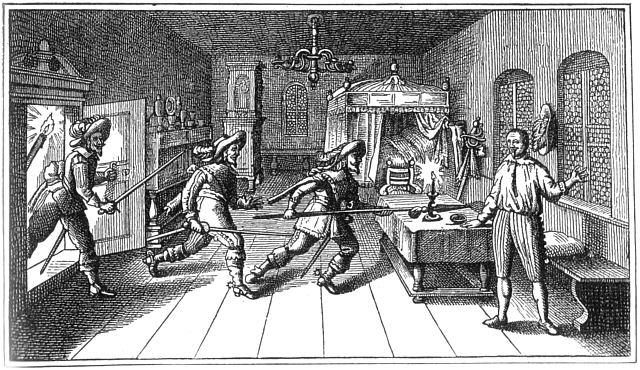
“y si el emperador Fernando II hubiese decidido finalmente mantener a Wallenstein en su puesto y no ordenar su ejecución?”
Wallenstein fue ejecutado (no falleció de muerte natural o en batalla), y existía una gran tensión política en la corte del emperador Fernando II por las campañas victoriosas en Alemania del rey sueco Gustavo Adolfo II, lo que permite plantear este “what if?” en el juego como históricamente posible, y que da una profundidad estratégica enorme a ‘El Colapso’ con una opción única que no incluyen juegos del mismo período histórico.
¿Qué impacto tiene en ‘El Colapso’ aplicar este “what if?”?
Durante el paso de Selección de líderes en la fase de planificación al inicio de un turno (excepto en el primer turno de un escenario), los jugadores pueden elegir los líderes que entren ese turno según su nivel de prestigio que indica en tres niveles (alto, medio y bajo) como ha sido su turno anterior.
Dentro del paso de Selección de líderes, el jugador católico a partir del turno 6 puede decidir aplicar este “what if?”, coincidiendo con el momento histórico del fallecimiento de Wallenstein.
A partir de este turno, si Wallenstein está en el mapa, el católico tiene que decidir si quiere mantener a Wallenstein en el juego con algunos efectos de juego, y tiene 2 opciones:
- Mantener a Wallenstein en el mapa, y retirar del juego a la reserva a un líder del mapa, o no situar en el mapa, uno de los líderes que pueden entrar durante la siguiente Selección de líderes.
- Eliminar de manera permanente a Wallenstein del juego, y situar el nivel de Prestigio del católico inmediatamente en el primer valor de Prestigio alto.
Estrategias de uso de Wallenstein en El Colapso
Opción 1: mantener a Wallenstein en el mapa
• Pros: Wallenstein es probablemente uno de los líderes más importantes de la facción católica en ‘El Colapso’, y sin duda el más importante para la nación de Austria en el juego. Por ello, suele ser interesante su uso durante el juego y mantenerlo, además de ganar 2 puntos de prestigio extra mientras esté juego.
• Cons: La decisión de mantener a Wallenstein en el mapa implica que uno de los generales en el mapa cada turno tengan que retirarse del juego, aunque podrían entrar en turnos posteriores durante el siguiente paso de Selección de líderes pero si el prestigio es bajo esto suele ser una mala decisión porque obligatoriamente se debe retirar a un líder del juego.
Opción 2: eliminar de manera permanente a Wallenstein del juego
• Pros: Teniendo en cuenta que suele ser difícil llegar al nivel alto de prestigio, el poder pasar al primer valor de ese nivel permite escoger hasta 3 líderes durante el paso de Selección de líderes, lo que implicaría que al retirar a Wallenstein habría dos líderes más. De otro modo, en prestigio medio solo puede entrar 1 líder, que teniendo en cuenta el mantener a Wallenstein implica que un líder no entre en juego no entrarían nuevos líderes, y en prestigio bajo no pueden entrar nuevos líderes e implicaría retirar obligatoriamente a otro líder del mapa.
• Cons.: el beneficio de pasar al primer valor de prestigio alto solo se produce una vez cuando se elimina permanentemente a Wallenstein, con lo que se ha de ajustar mucho el momento de esta decisión que sólo se puede producir una vez. Además, podría ser que el nivel de prestigio fuese alto (suele ser difícil de conseguir) y no ser beneficioso eliminar a Wallenstein. - Otras reglas y mejoras incluidas por testeadores
Además del “what if?” opcional de mantener a Wallenstein, que no es una regla obligatoria, sinó que el jugador católico debe tomar la decisión una vez (y sólo una vez durante el juego) a partir del turno 6, durante el testeo de ‘El Colapso’ otras personas que han probado el juego me han sugerido reglas, modificaciones y ajustes muy interesantes que han ayudado a mejorar todavía más el juego y que reflejan la importancia crucial del testeo de los juegos y escuchar a ideas y sugerencias de mejoras de testeadores de aquellas que aporten mejoras y un valor añadido al juego.
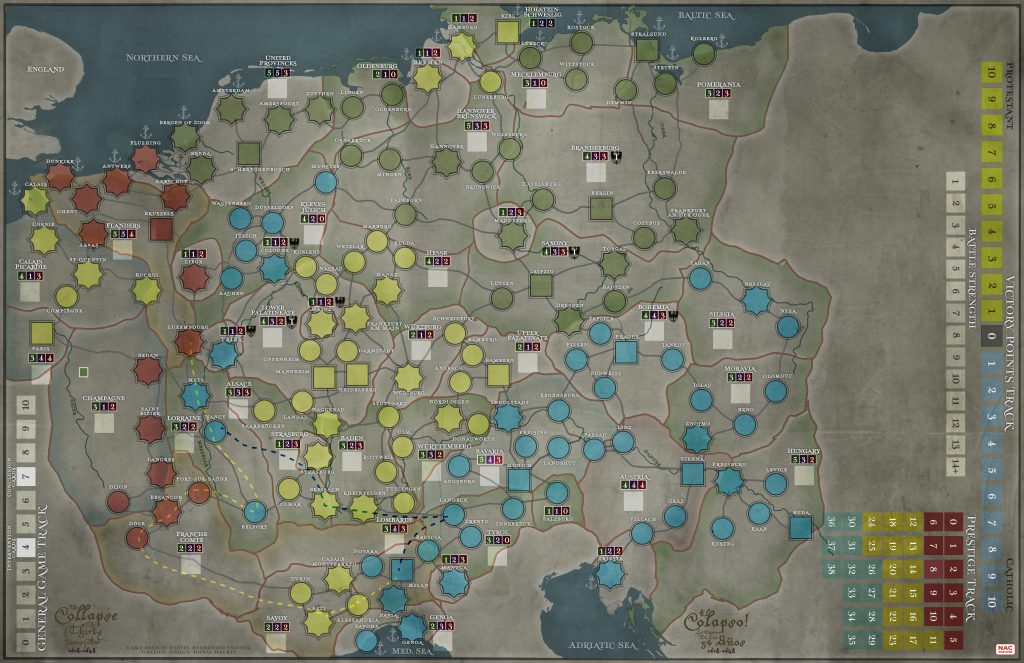
A continuación, ¿menciono algunos de los cambios más importantes por testeadores que han ajustado y mejorado el juego, que agradezco su ayuda y reconozco en ‘El Colapso’ como la sugerencia del “what if?” de mantener a Wallenstein de Ignacio Notario.
- Mayor desgaste y coste en batalla mayor (Paco Ronco)
- Ajustes a un concepto estratégico (Francisco Gradaille)
- Ajustes geográficos en el mapa (Tim Tigges)
- Capacidades de señuelo (testeadores en la convención Batalladores 2022 en Zaragoza)
Agradezco mucho la ayuda de tanta gente al desarrollo de ‘El Colapso’, y estad atentos tanto al blog del juego en la página web de NAC Wargames como en mi perfil de twitter @HndezDaniel, para conocer más novedades y progreso del juego y el próximo testeo en abierto en vassal para quien le interese el juego.

4. ¿Que vendrá en el próximo artículo?
¡Estad muy atentos para las próximas novedades muy interesantes de ‘El Colapso’!
El juego está actualmente en reserva en la página web de NAC Wargames y Mas que Oca (sin solicitud de pago), donde podéis apoyar la publicación del juego con vuestro registro en https://t.co/yPf87XEdw9
Es muy importante vuestro registro en la reserva del juego, para apoyar a que el juego se publique finalmente.
Si tienes alguna pregunta o quiere que amplíe un artículo o escriba sobre algo que le interese, hágamelo saber con un comentario sobre este artículo, envíame un correo electrónico a daniel.hndez@gmail.com y sigue las noticias del juego en Twitter (@HndezDaniel) y Instagram (daniel_hernandez_iniesta)
AUTOR DEL JUEGO: DANIEL HERNÁNDEZ INIESTA
Article in English (for the Spanish version of the article, please look at the top of the article)
- Wallenstein in ‘The Collapse’
On this day the famous general Albrecht von Wallenstein died, who under the orders of Emperor Ferdinand II participated during the 30 years’ war in major battles such as Dessau (1626) or Lützen (1632). For reasons widely discussed throughout history, the most probable being considered a possible intention to turn to the Protestant side or a great personal ambition, Emperor Ferdinand II ordered his assassination in 1634.
‘The Collapse’ reflects Wallenstein relevance in the game from his entry on turn 2 with the best leaders activation rating, allowing him to activate easier the units that are with him, as well as maneuver to evade or intercept and have a better chance of surviving the battles in which he participates.

In ‘The Collapse’, Wallenstein has the following effects:
1) Wallenstein can’t be in the same city as Tilly.
2) During the end of turn phase, the Catholic player gains 2 extra prestige points if he is on the map.
3) Possibility of keeping Wallenstein in ‘The Collapse’ (see section 2).
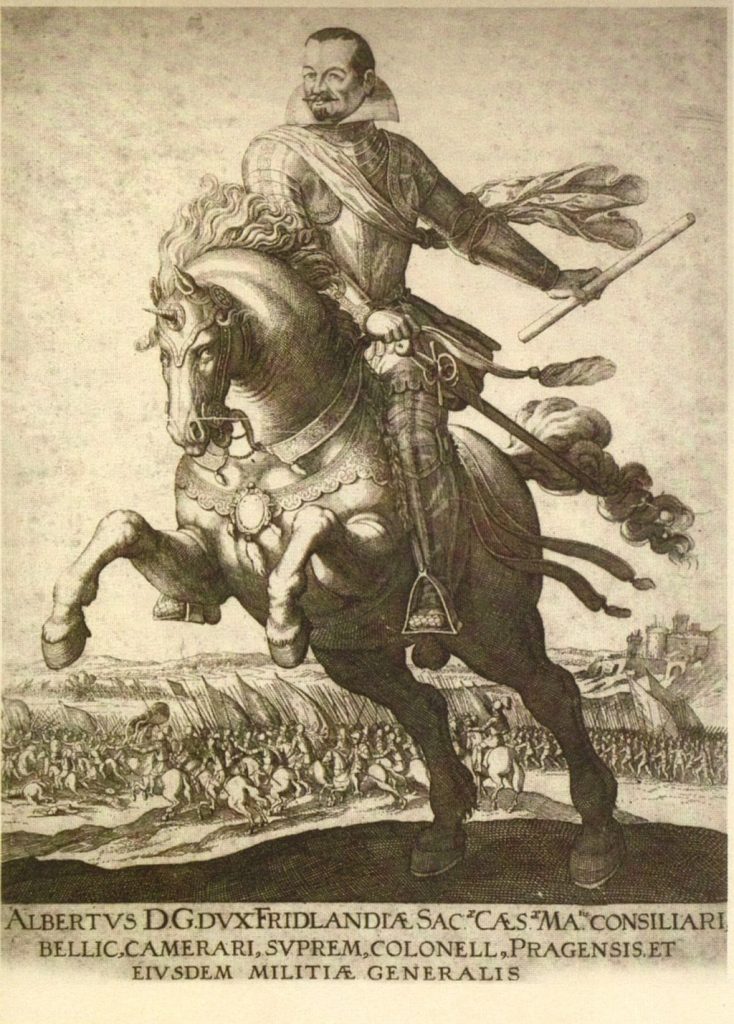
- «And if Wallenstein had not been executed?»
‘The Collapse’ includes a strategic option with a “what if ? very interesting and historically possible that Ignacio Notario (who reviewed an initial regulation of the game) suggested to me.
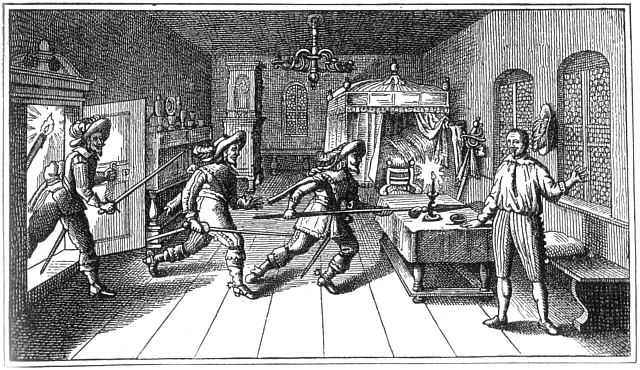
«What if Emperor Ferdinand II had finally decided to keep Wallenstein in his position and not order his execution?»
Wallenstein was executed (he did not die a natural death or in battle), and there was great political tension in the court of Emperor Ferdinand II due to the victorious campaigns in Germany of the Swedish king Gustav Adolf II, which allows us to raise this » what if? in the game as historically possible, providing a great strategic depth to ‘The Collapse’ with a unique option that doesn’t include games from the same historical period.
What impact does it have on ‘The Collapse’ to apply this “what if??
During the Leader Selection step of the planning phase at the start of a turn (except for the first turn of a scenario), players may choose the leaders entering that turn based on their prestige level which is listed in three levels (high, medium and low) as it has been his previous turn.
Within the leader selection step, the catholic player from turn 6 can decide to apply this “what if?”, following the historical Wallenstein’ death.
From this turn, if Wallenstein is on the map, the Catholic has to decide if wants to keep Wallenstein in the game with some game effects and has 2 options:
1) Keep Wallenstein on the map, and remove a map leader from play to reserve, or not place on the map, one of the leaders that can enter during the next Leader Selection.
2) Permanently remove Wallenstein from the game, and immediately set the Catholic’s Prestige level to the first high Prestige value.
Strategies for using Wallenstein in The Collapse
Option 1: Keep Wallenstein on the map
• Pros: Wallenstein is probably one of the most important leaders of the Catholic faction in ‘The Collapse’, and certainly the most important for the nation of Austria. Therefore, it is usually interesting to use it during the game and maintain it, in addition to earning 2 extra prestige points while it is in play.
• Cons: The decision to keep Wallenstein on the map implies that one of the generals on the map each turn has to be removed from the game, although they could enter in later turns during the next step of Selection of leaders but if the prestige is low this usually be a bad decision because a leader currently on the map must be removed from the game.
Option 2: Permanently remove Wallenstein from the game
• Pros: Taking into account that it is usually difficult to reach the high level of prestige, being able to go to the first value of that level allows you to choose up to 3 leaders during the Leader Selection step, which would mean that when removing Wallenstein there would be two more leaders. Otherwise, in medium prestige only 1 leader can enter, which taking into account keeping Wallenstein implies that a leader does not enter the game, new leaders would not enter, and in low prestige new leaders cannot enter and it would imply the mandatory removal of another leader of the map.
• Cons: The benefit of moving to the first high prestige value only happens once when Wallenstein is permanently removed, so the timing of this decision that can only happen once has to be fine-tuned. Also, it could be that the prestige level is high (it’s usually hard to get) and removing Wallenstein is not beneficial.
- Other rules and improvements included by testers
In addition to the » what if ? optional to keep Wallenstein , which is not an obligatory rule, but the catholic player must make the decision once (and only once during the game) starting from turn 6, during the test of ‘The Collapse’ other people who have tested the game have suggested very interesting rules, modifications and adjustments that have helped to improve the game even more and that reflect the crucial importance of game testing and listen to ideas and suggestions for improvements from testers of those who bring improvements and added value to the game.

Below, do I mention some of the more important changes by testers who have tweaked and improved the game, which I appreciate their help and recognize in ‘The Collapse’ as the suggestion of “what if? to keep Wallenstein from Ignacio Notario.
- Higher losses and cost in a major battle (Paco Ronco)
- Adjustments to a strategic concept (Francisco Gradaille)
- Geographic adjustments on the map (Tim Tigges)
- Dummy capabilities (playtesters at the Batalladores 2022 convention in Zaragoza)
Follow my blog at ‘The Collapse’ at NAC Wargames website and my twitter profile @HndezDaniel, for more news and progress on the game and the next open testing in vassal for anyone interested in the game.

4. What will come in the next article?
Stay tuned for the next very interesting ‘The Collapse’ news!
The game is currently on pre-order on the NAC Wargames and Mas que Oca website (without payment request), where you can support the publication of the game with your registration at https://t.co/yPf87XEdw9
If you have any questions or want me to expand on an article or write about something that interests you, please let me know by commenting on this article, email me at daniel.hndez@gmail.com, and follow the game updates on Twitter (@HndezDaniel) and Instagram (daniel_hernandez_iniesta)
GAME DESIGNER: DANIEL HERNÁNDEZ INIESTA

